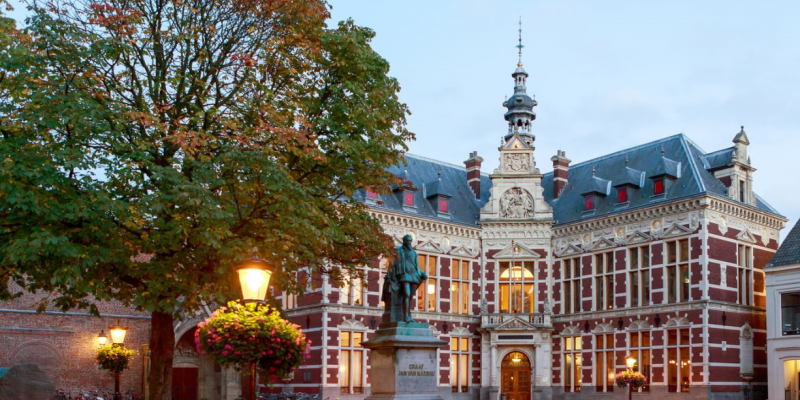PhD position Defining the role of Sublimating Ices in Mass Wasting across the Solar System (1.0 FTE)
PhD position Defining the role of Sublimating Ices in Mass Wasting across the Solar System (1.0 FTE)
You cannot apply for this job anymore (deadline was 12 Mar 2023).
Browse the current job offers or choose an item in the top navigation above.
Job description
Mass wasting is one of the most abundant geomorphological processes in our solar system contributing immensely to surface evolution on planets, moons, comets, and asteroids. The mobility and morphology of mass-wasting deposits is affected by the presence and abundance of volatiles, for example water and carbon dioxide. By deciphering the formative processes of mass-wasting deposits and the role of volatiles therein we can thus identify where and when volatiles have been present in our Solar System, which has key implications for the search of life in the Solar System. However, landforms on rocky bodies in the solar system may be similar in appearance to those found on Earth, but may in fact be formed by disparate and so-far unknown processes. Therefore, extra-terrestrial landforms assumed to be created by liquid water may be formed by process-volatile interactions unknown to Earth. Sublimation is often hypothesized to play a key role in shaping the surfaces of extra-terrestrial bodies, but the lack of terrestrial analogues has hampered our ability to recognize sublimation-formed landforms.
We have discovered a new way to study sublimation-driven mass wasting under extra-terrestrial conditions in a laboratory flume emplaced in a pressure chamber. This gives us the unique possibility to create scale models under extra-terrestrial conditions and quantify mobility and morphology of sublimation-driven mass-wasting processes. We can then compare these
to mass-wasting deposits observed on terrestrial planets, moons, comets, and asteroids in our Solar System. This will fill a key knowledge gap in our understanding of extra-terrestrial landscapes, for the first time providing the urgently-needed knowledge, which could lead to fundamental reinterpretations of extra-terrestrial landforms. In the longer term it may aid better planning of future planetary observations and exploration of the Solar System.
What will you be doing?
You will quantify and compare the mobility and morphology of mass-wasting deposits across our Solar System, developing a unique comparison between mass-wasting in various extra-terrestrial environments. In addition, you will create an experimental dataset of sublimation-driven mass-wasting under a range of (extra)terrestrial atmospheric pressures and temperatures. Experimental setups will be developed and tested at Utrecht University, and will be employed at the environmental chambers at the Open University (UK) and/or Aarhus University (Denmark). Combining the satellite image analyses with the experimental results, you will then infer by quantitative comparison on which rocky bodies in our solar system mass-wasting deposits may have formed by sublimating ices. You will work closely together with your supervisors, other researchers from the department and international collaborators. Also, as a PhD candidate at Utrecht University you will follow courses and attend conferences as part of your own academic and personal development. You will also assist in teaching courses at Bachelor's and Master's level at our faculty. Both activities amount to approximately 10% of the contracted time.
Specifications
- 36—40 hours per week
- €2541—€3247 per month
- Utrecht View on Google Maps
Requirements
- has an MSc degree in physical geography, geomorphology, planetology, geology, or a related field;
- is passionate about (planetary) geomorphology. Experience in working with satellite imagery and performing laboratory experiments is an advantage;
- is a team player who likes to think across disciplinary and planetary boundaries, who is willing and able to work in an international and interdisciplinary team;
- has good English oral and writing skills (English at C1 level or better qualifies) or willingness and aptitude to obtain this level by training.
Conditions of employment
You will be offered a temporary position (1.0 FTE), initially for one year with an extension to a total of four years upon a successful assessment in the first year, and with the specific intent that it results in a doctorate within this period. The gross salary ranges between €2,541 in the first year and €3,247 in the fourth year of employment (scale P according to the Collective Labour Agreement Dutch Universities) per month for a full-time employment. Salaries are supplemented with a holiday bonus of 8% and a year-end bonus of 8.3% per year.
In addition, Utrecht University offers excellent secondary conditions, including an attractive retirement scheme, (partly paid) parental leave and flexible employment conditions (multiple choice model). For more information, please visit working at Utrecht University.
Employer
Utrecht University's Faculty of Geosciences studies the Earth: from the Earth's core to its surface, including man's spatial and material utilisation of the Earth - always with a focus on sustainability and innovation. With 3,400 students (BSc and MSc) and 720 staff, the Faculty is a strong and challenging organisation. The Faculty of Geosciences is organised in four Departments: Earth Sciences, Human Geography & Spatial Planning, Physical Geography, and Sustainable Development and is located at Utrecht Science Park in the Vening Meinesz building A near the historical city centre of Utrecht.
The team of the Department of Physical Geography excels in research and education on BSc, MSc and PhD level. We research processes, patterns and dynamics of Earth’s systems from the mountains to the sea, and the interaction in between. This knowledge is essential for the sustainable management of our planet and to guarantee the availability of resources for the next generations. We are a lively department that hosts an active PhD candidate community of more than thirty PhD students. Will you join our team?
:fill(white)/logos/uu-en-wide.jpg)
